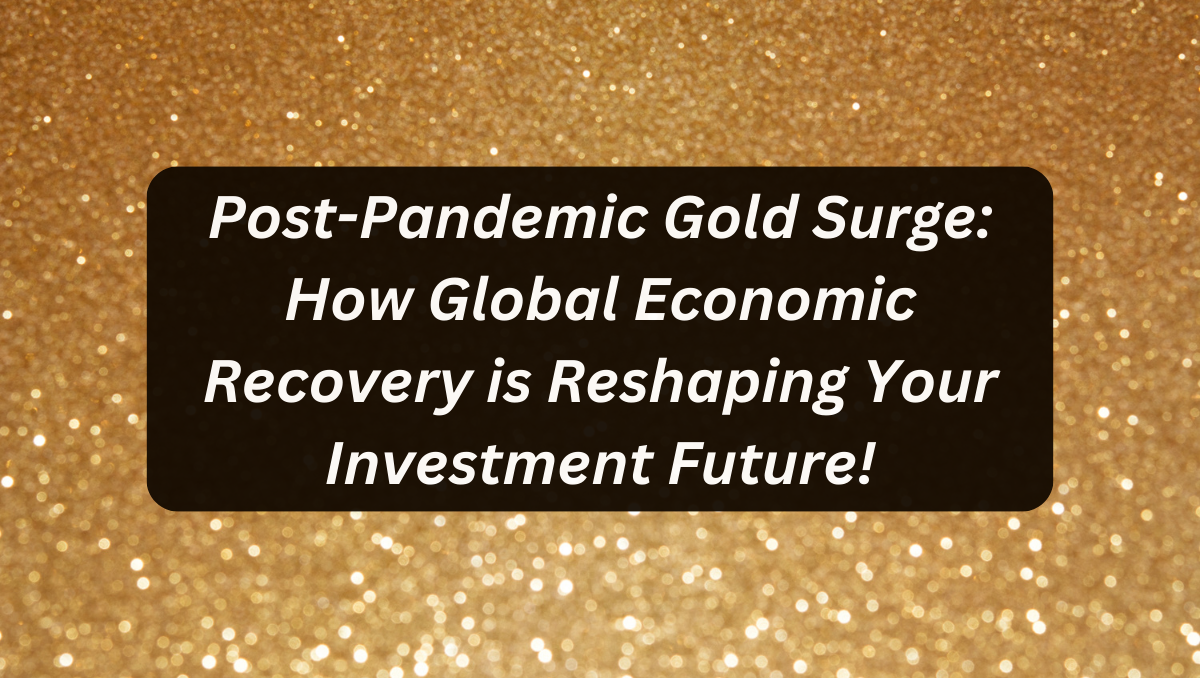In the aftermath of the pandemic, as economies around the world begin to rebound, gold prices are once again capturing investor attention. Once seen primarily as a safe haven during crises, gold is now navigating a complex landscape marked by rapid economic recovery, rising inflation, and shifting monetary policies. In this in-depth analysis, we explore the trends driving gold prices post-pandemic and what these dynamics mean for investors looking to secure their wealth in 2025 and beyond.
A New Economic Dawn
The global recovery from the pandemic has been nothing short of extraordinary. Stimulus measures, rapid vaccination rollouts, and renewed consumer confidence have fueled economic growth across many regions. With this recovery, however, comes a resurgence in inflationary pressures and the risk of currency devaluation. During the pandemic, gold soared as investors sought refuge from volatile equity markets and collapsing currencies. Now, as economies stabilize, the interplay between growth and inflation is redefining gold’s role in modern portfolios.
Gold’s Performance in the Post-Pandemic Era
Historically, gold has provided a hedge against economic instability. During times of crisis, its value tends to rise as confidence in paper assets dwindles. However, the post-pandemic recovery presents a mixed picture. On one hand, robust economic growth could divert investor attention from gold to riskier assets like equities. On the other hand, persistent inflation and currency devaluation continue to underpin gold’s appeal.
The table below provides an overview of gold price trends during recent recovery phases compared to the pandemic period:
| Period | Average Annual Gold Price Increase | Key Economic Factors |
|---|---|---|
| Pandemic Peak (2020-2021) | ~20-25% | High uncertainty, massive stimulus, safe-haven demand |
| Early Recovery Phase (2021-2022) | ~10-15% | Economic reopening, gradual normalization, rising inflation |
| Post-Pandemic Outlook (2023-2025) | Projected: 8-12% | Continued economic growth with inflation pressures and monetary tightening |
*Data are approximate, based on historical trends and expert forecasts.
The Inflation Connection
One of the most critical drivers of gold prices in the post-pandemic era is inflation. As governments around the world continue to implement expansive fiscal policies and central banks adjust interest rates, the risk of currency devaluation grows. Gold, with its intrinsic value and finite supply, serves as a crucial hedge against these risks. For investors, this means that even as economies rebound, holding gold can provide a safeguard against the erosion of purchasing power.
What This Means for Investors
The evolving economic landscape requires a balanced approach to portfolio management. While the recovery has reinvigorated equity markets, the persistent threat of inflation makes gold an indispensable part of any diversified strategy. Investors are advised to consider gold as both a defensive asset during periods of volatility and a long-term store of value.
Here’s how gold compares to other asset classes in the current economic climate:
| Asset Class | Role in Portfolio | Inflation Hedge Potential |
|---|---|---|
| Gold | Safe haven, liquidity provider | High – historically effective against inflation and currency devaluation |
| Stocks/Equities | Growth engine, capital appreciation | Moderate – high returns but sensitive to market cycles and inflation fears |
| Real Estate | Income generation, long-term growth | Moderate – can act as an inflation hedge, though localized market risks exist |
| Cryptocurrencies | Speculative, high-growth potential | Low-Moderate – highly volatile, emerging track record as an inflation hedge |
*These comparisons highlight that while gold might not offer the explosive growth of equities or cryptocurrencies, its role in stabilizing a portfolio during uncertain times remains unmatched.
Central Bank Policies and Their Influence
Central banks have been pivotal in shaping the post-pandemic economic landscape. With many institutions increasing their gold reserves as part of a broader strategy to buffer against inflation and financial instability, the ripple effects on gold prices are significant. This institutional confidence in gold further reinforces its position as a cornerstone of diversified portfolios.
The Bottom Line
As we approach 2025, the dynamics of global economic recovery are set to redefine investment strategies. Gold continues to shine as a time-tested safe haven, offering protection against inflation, currency devaluation, and market volatility. For investors seeking stability in uncertain times, incorporating gold into your portfolio is more than a conservative choice—it’s a strategic move to safeguard long-term wealth.
Stay tuned for more expert insights and in-depth analyses as we continue to explore the evolving world of gold investments. In the post-pandemic era, while the world rebuilds, gold remains a beacon of stability and a critical component of resilient investment portfolios—one ounce at a time!
